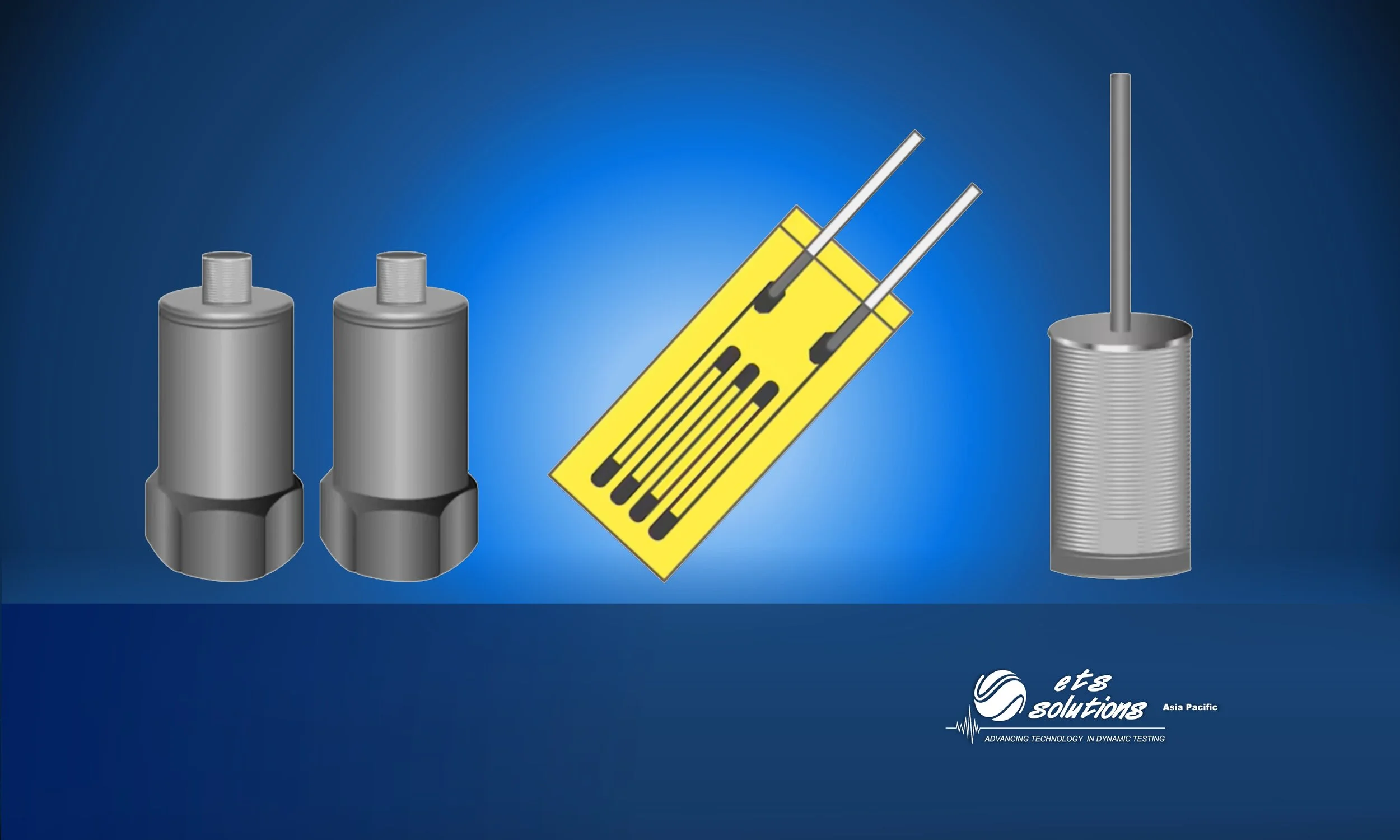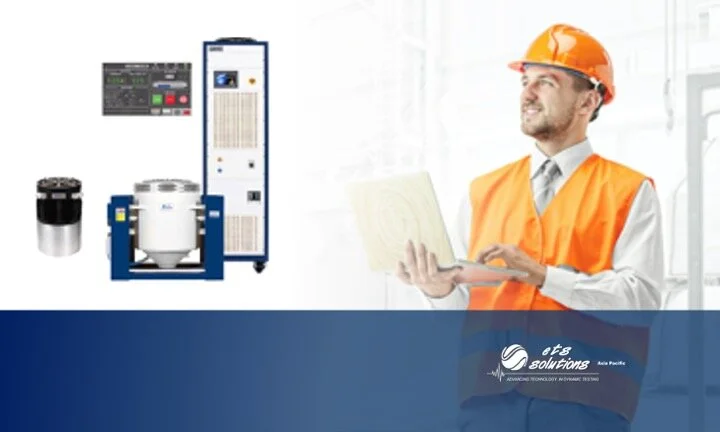ETS Solutions Asia is a leading provider of technologies, consultancy, products and services in various sectors, including industry solutions from Siemens Digital Industries Software. Specializing in Simulation & Test, we help companies establish a competitive advantage by optimizing their processes, from planning and development through manufacturing, production and support.
Vibration Measurement Techniques in Power Plant
Vibration measurement is complex because of its many components: displacement, velocity, acceleration, and frequencies. Vibration measurement is an effective, non-intrusive method to monitor machine condition during start-ups, shutdowns and normal operation. Regular vibration monitoring can detect in a power plant shaft lines, deteriorations and defects of a number of various structural mechanical conditions, for example cracks, bearing faults, coupling damage, imbalance as well as interruptions in the electric grid.
Gas Turbine Vibration Monitoring
Vibration measurements are commonly considered to be a sound indicator of a machine’s overall health state (global monitoring).The general principle behind using vibration data is that when faults start to develop, the system dynamics change, which results in different vibration patterns from those observed at the healthy state of the system monitored.
Vibration Analysis on a conveyor unit
Belt conveyors are an integrated transmission and carrying mechanism with length sometimes extending several thousand meters. In traditional design and analysis of belt conveyors, vibration and impact are usually ignored and only static design is considered. However, to ensure the safety of conveyor operation for this restricted analysis, designers must increase the safety factor, which increases production costs. Many research groups have conducted dynamic analysis of large belt conveyors to reduce production cost and optimize conveyor performance. The conveyor belt was first modeled as an elastic body and then a viscoelastic body to incorporate viscoelastic characteristics of belt cover layer.
Electronic Components Reliability Testing
If your company makes planes, trains, automobiles, medical devices, computers, and communication systems, or you are a large electronic device supplier, the reliability of your products in the field is crucial to your business success. The growing market for electric and hybrid vehicles is increasing the pressure on life-time performance of the devices that power them.
Torsional Vibration Analysis
Torsional vibration measurements allow engineers to better understand the dynamics of their rotating equipment, enabling them to troubleshoot and/or validate performance. With a better understanding of the reasons and methods to measure torsional vibration, the right instrumentation, and a helpful partner, you will become better positioned to make the decisions you need to decrease downtime and increase productivity.
SRS - Shock Response Spectrum
Accelerometer
An accelerometer is a device that measures the vibration, or acceleration of motion of a structure. They measure in meters per second squared (m/s2) or in G-forces (g). The force caused by vibration or an acceleration (change in motion) causes the mass to "squeeze" the piezoelectric material which produces an electrical charge that is proportional to the force exerted upon it. Since the charge is proportional to the force, and the mass is a constant, then the charge is also proportional to the acceleration. Accelerometers are useful for sensing vibrations in systems or for orientation applications.
What is actually a vibration sensor?
Vibration Analysis
Vibration analysis is the most prevalent method used to monitor the levels and patterns of vibration signals within a component, machinery or structure, in order to detect abnormal vibration events and then using that information to analyse and evaluate the overall condition of the component, machinery or structure. In short, vibration analysis helps you monitor and detect issues using vibration data
Vibration Testing on Shakers
Vibration Testing is one such environmental test critical to the design process. All closed-loop vibration tests, consists of four main components: a vibration controller, an amplifier, a shaker, and a feedback sensor, together, these four components make up a vibration testing system. ETS Solutions Asia instruments vibration controllers control electrodynamic and hydraulic shakers from tabletop to warehouse size systems.
Vibration Resistance of Electrical Equipment
Shock and vibration resistance gives information concerning the robustness of the mechanical design of a device. The methods for evaluating the vibration resistance are defined in IEC 60068-2-6 and IEC 60068- 2-64. Electrical and electronic equipment are exposed to vibration in many applications and must withstand this without any degeneration, or even failure, in their function. Therefore, manufacturers of electrical and electronic devices put a great deal of effort into ensuring their instruments are prepared for such applications.
Random Vibration Testing
Sine Vibration Testing
Sine Vibration Testing may be considered as the most basic vibration testing method used. This type of vibration testing requires less complex parameters compare to other type of vibration testing. Knowing the nature of sinusoidal signal, makes this type of vibration testing easier to understand and to get familiar with. Though, easier to understand does not make it less important compare to other type of vibration testing. Sine vibration testing may still be at the top rank when we are thinking of dynamic characteristic measurement.
Limitations of Existing Vibration Testing Systems
Running Test with Shock Test Machine
MIL-STD-810 Standard - Various types of vibration tests
ETS I Series Vibration Testing System with force rating from 4,000 to 16,000 kgf is ideal for screening of medium sized assemblies with extreme high acceleration test level and high frequency range. The Extreme Acceleration Shaker Y-Ring (EAS-Y Ring) armature is a revolutionary design which will allow for using a proportioned head expander to test multiple specimens simultaneously at extreme high acceleration level.
Accredited Vibration Testing Services in Singapore
Products are vibration tested to determine limits and tolerances. Every product is vulnerable to vibration loads and potential breakage or failure. That includes tiny objects like microprocessors and circuit boards right up to giant structures like bridges and skyscrapers. Testing through vibrations ensures the product is qualified for its intended purpose and meets safety and regulatory standards, as well as complies with any International Standards Organization (ISO) requirements.
Providing safe and efficient vibration qualification testing
For your vibration qualification tests, the unique combination of Simcenter SCADAS™ hardware, Simcenter Testlab™ software and ETS Solutions expertise in vibration testing, delivers outstanding performance for all standard and advanced testing requirements. This includes tests based on tailored profiles, interfaces with test cells or climatic chambers, and tests based on newer techniques such as the military standard (MIL-STD) 527 method.
Enabling in-depth fatigue and life analysis
Simcenter 3D software offers a distinctive suite of tools to support fatigue design in all stages of development. This includes easy-to-use wizards for strength and fatigue in the design phase, fatigue information on the current simulated part, detailed analysis of complex load scenarios, including weldments and connections, and new materials and manufacturing processes.

























